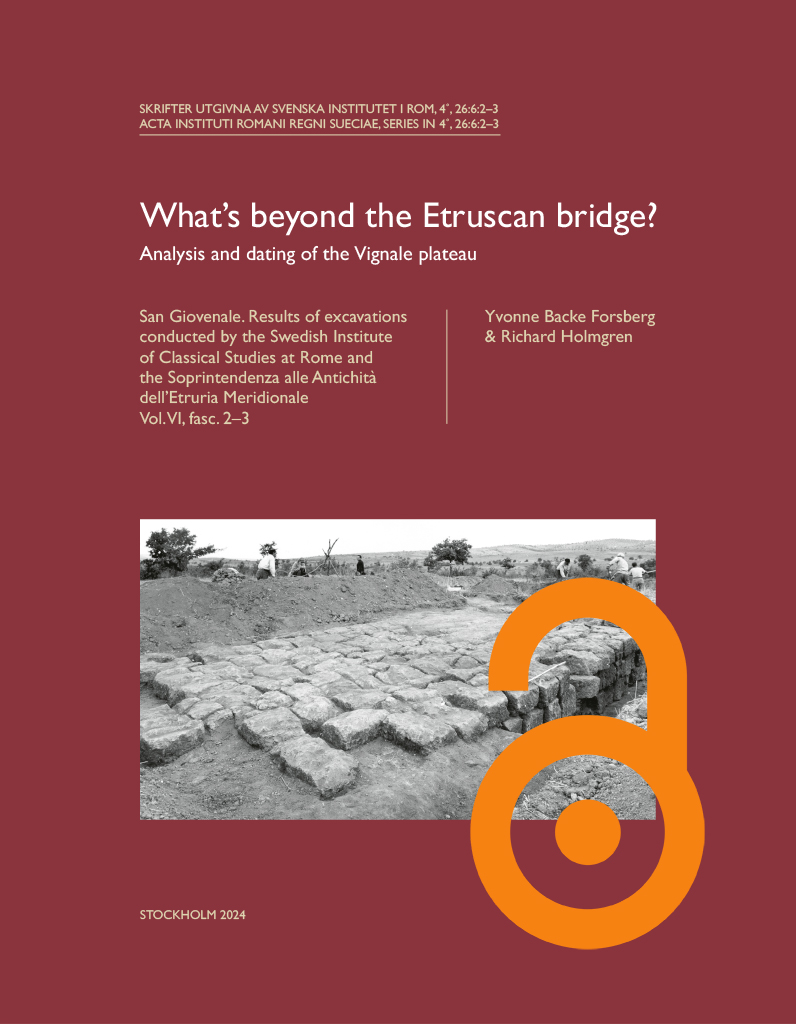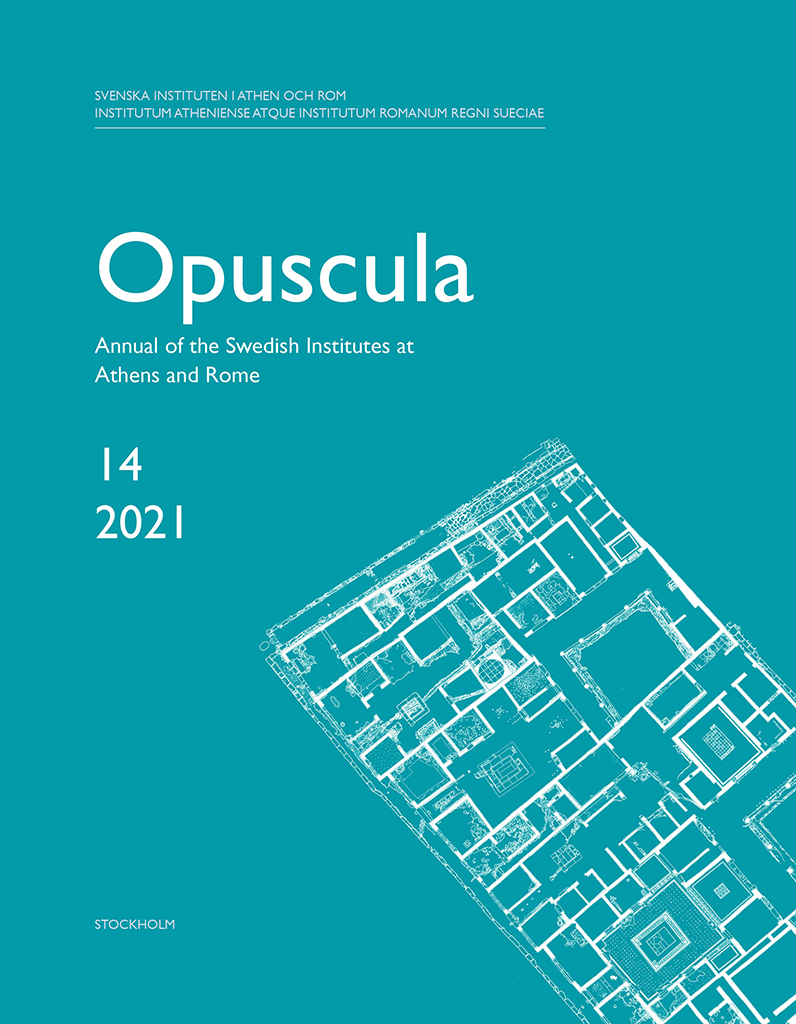Published by the Swedish Institute of Classical Studies in Rome. Distributed by Eddy.se AB. Open access, use links below. San Giovenale vol. 6, fasc. 2–3. What’s beyond the Etruscan bridge? Analysis and dating of the Vignale plateau By Yvonne Backe Forsberg & Richard Holmgren. Stockholm 2024. ISBN: 978-91-7042-188-4 (hardcover: 345 pp.). https://doi.org/10.30549/actarom-4-26-6-2-3 For more information about the San Giovenale-series, see https://ecsi.se/actarom-4-26/ Abstract The Etruscan site of San Giovenale has been excavated periodically since 1956. From the beginning the main focus has been the question of settlement remains. However, a fundamental area within the site had still not undergone the inquiry necessary for a complete understanding of the site as a whole. The Vignale plateau, connected to the main site by an Etruscan bridge, was surveyed and partly excavated in 1959–1960, but not published. The Vignale Archaeological Project (VAP) began new investigations in 2006 that aimed to answer the question of “What’s beyond the Etruscan bridge?” This publication focuses on the initial investigations of 1959–1960, augmented by new ground- and aerial remote sensing surveys. The current volume is divided in six chapters. Through an introduction, and geological/topographic and historical/archaeological settings (Chapters 1–3), the reader achieves a general understanding of Vignale within…
Opuscula is published by the Swedish Institutes at Athens and Rome, with the aid of a grant from the Swedish Research Council. Distributed by Eddy.se AB. View journal at ERIH PLUS. All content available with open access. The humans of ancient Hermione. The necropolis in the light of bioarchaeology By Anna Tornberg Abstract Bioarchaeology has the potential to substantially inform about ancient lifeways through osteological analyses of the remains of the once-living individuals. This article provides insights of the demography and health of the people of ancient Hermione (Geometric–Roman period). A minimum number of 85 individuals from the Hermione necropolis was osteologically analysed. Although the analysis was limited by taphonomic processes and the long period of use of the necropolis, the results point towards a population affected by urban hazards, such as infections, high child mortality, and, possibly, decreased opportunity to survive into senescence. Further, stunted growth, evidence of general stress primarily in the juvenile skeletal assemblage, and a possible case of child abuse informs of the hardships experienced by children in ancient Hermione. The osteological analysis also confirms that the two individuals buried in the “Warrior Tomb” were of both sexes. The skeletal remains were unfortunately too poorly preserved…
Opuscula is published by the Swedish Institutes at Athens and Rome, with the aid of a grant from the Swedish Research Council. Distributed by Eddy.se AB. View journal at ERIH PLUS. All content available with open access. Life and death in ancient Hermione. Excavations in the necropolis By Angeliki Kossyva (Ephorate of Antiquities of the Argolid, Greece) Abstract The wealth of ancient Hermione is no longer visible: continuous habitation from c. 3000 BC down to the present day has obliterated most traces. Important information on the social organization and economy of Hermione can however be drawn from the tombs that have been unearthed. A large cemetery was discovered in the early 20th century just outside the city gate, stretching along the road leading to ancient Mases and in continuous use for a period of 1,500 years. It covers an area of 1.5 km east–west along the modern Hermione–Kranidi rural road, taking in the terrain to either side to a width of 160 m and extending south to Pron Hill and north to a patch of level ground some 60 m wide. In this article we focus on cemetery finds unearthed in the area south of the present-day Gymnasium-Lykeion school of…
Published by the Swedish Institute of Classical Studies in Rome. Distributed by Astrom Editions. The Iron Age necropolis of Sorbo at Cerveteri By Ingrid Pohl Bibliographical information Ingrid Pohl, The Iron Age necropolis of Sorbo at Cerveteri (Skrifter utgivna av Svenska institutet i Rom, 4°, 32), Lund 1972. Softcover: 322 pp. ISSN 0081-993X. ISBN 9789170420016



